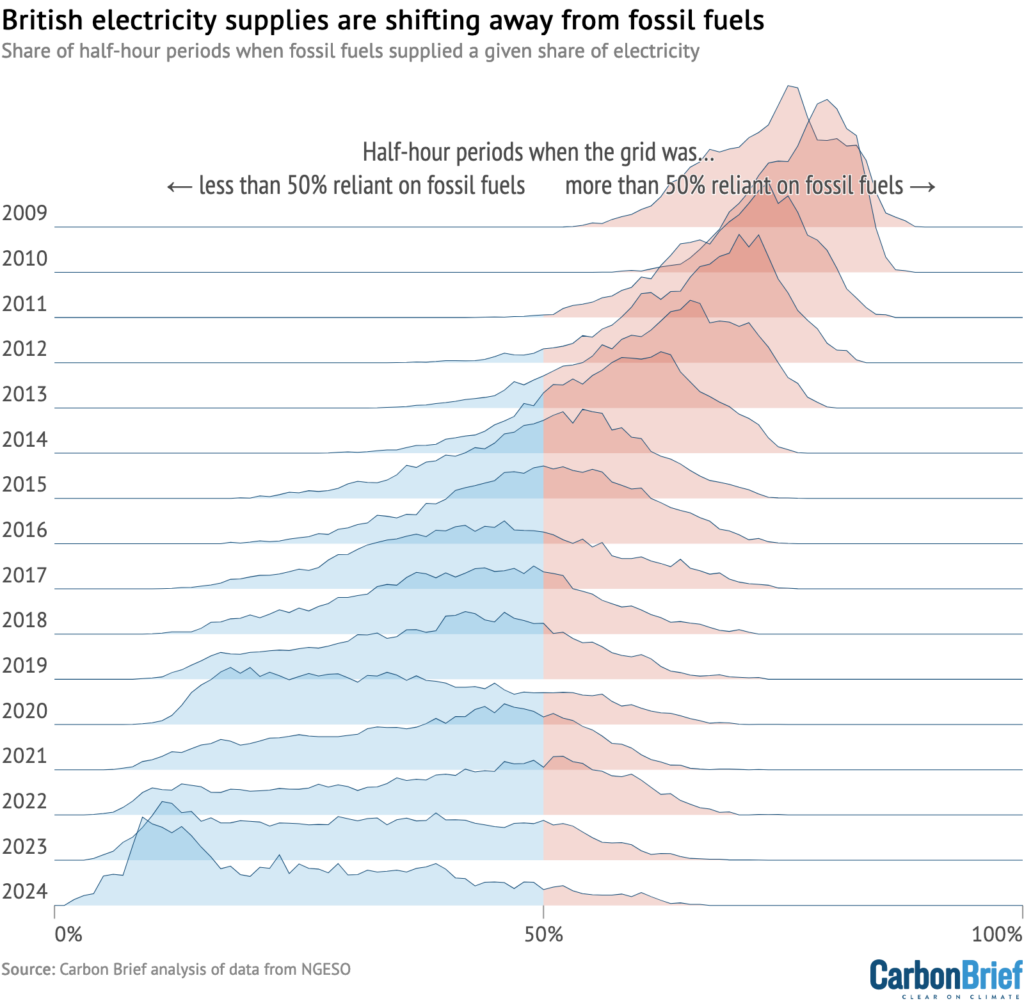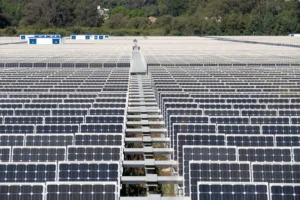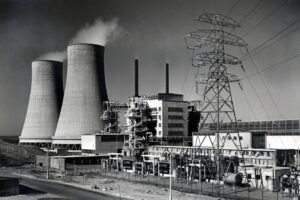
Chart: How British electricity supplies are shifting decisively away from fossil fuels
Multiple Authors
05.03.24Multiple Authors
03.05.2024 | 11:55amCarbon Brief analysis recently showed that fossil fuels supplied a record-low 2.4% of electricity on the island of Great Britain, for one hour on Monday 15 April.
The analysis illustrated how National Grid Electricity System Operator (NGESO), which runs the island’s grid, is closing in on its target of “zero carbon operation” for short periods by 2025.
Yet, despite there being increasingly frequent periods with hardly any electricity coming from fossil fuels, there are still times when gas power remains essential for the GB grid.
Indeed, the analysis noted that for a few hours this January, fossil fuels were meeting around 66% of demand. So is the GB grid getting less dependent on fossil fuels or not?
Snapshots from short periods – when the fossil fuel share of supplies can be very low, or stubbornly high – fail to paint a full picture of what is going on.
Even the annual averages included in the analysis obscure the variability resulting from increased reliance on wind and solar power, which depend on the weather.
The figure below – reminiscent of Joy Division’s iconic “Unknown Pleasures” album cover, designed by Peter Saville in 1979 – paints a more complete picture of how British electricity supplies are shifting decisively away from fossil fuels.
The figure shows the distribution of half-hours in each year since 2009, arranged according to the share of fossil fuels during each time period. (Half-hours are the time period currently used for electricity market “settlement”, when contracts for supply and demand are settled up.)
Periods when the grid was more than 50% reliant on fossil fuels are shaded red and, reading from top to bottom, these have become increasingly rare over the past 15 years. Conversely, periods with less than 50% fossil fuel, shaded blue, are becoming increasingly common.

The figure shows that the entire distribution of half-hour periods in each year has shifted – quite dramatically – away from reliance on fossil fuels.
In other words, not only have the maximum and minimum extremes of fossil fuel reliance reduced, but everything in between has shifted away from fossil fuels, too, including the annual average.
For example, every single half-hour period in 2009 was at least 50% reliant on fossil fuels. In 2024 to date, nearly all half-hours – some 92% of them – were less than 50% reliant on fossil fuels.
Indeed, fossil fuels were supplying less than 15% of GB electricity in around a third of all half-hours in 2024 to date – and less than 23% of the mix in half of all settlement periods.
The figure also shows that the range of maximum to minimum fossil fuel share has widened.
Crucially, there continue to be periods when fossil fuels are indispensable for maintaining secure electricity supplies. Yet as the country shifts towards the current government target of a “fully decarbonised” grid by 2035, those periods will become increasingly unusual.
As a result, while there is a clear need for alternatives to gas power if the grid decarbonisation target is to be met, those alternatives are likely to be called upon fairly infrequently.
This has obvious implications for the alternatives to gas that will be needed. Specifically, there will be a need for flexible low-carbon capacity that can be switched on for relatively short periods.
Overall, while achieving a record-low 2.4% fossil fuel share for an hour in April is a major step forward, there is still a very long way to go if the 2035 target is to be met.
-
Chart: How British electricity supplies are shifting decisively away from fossil fuels





